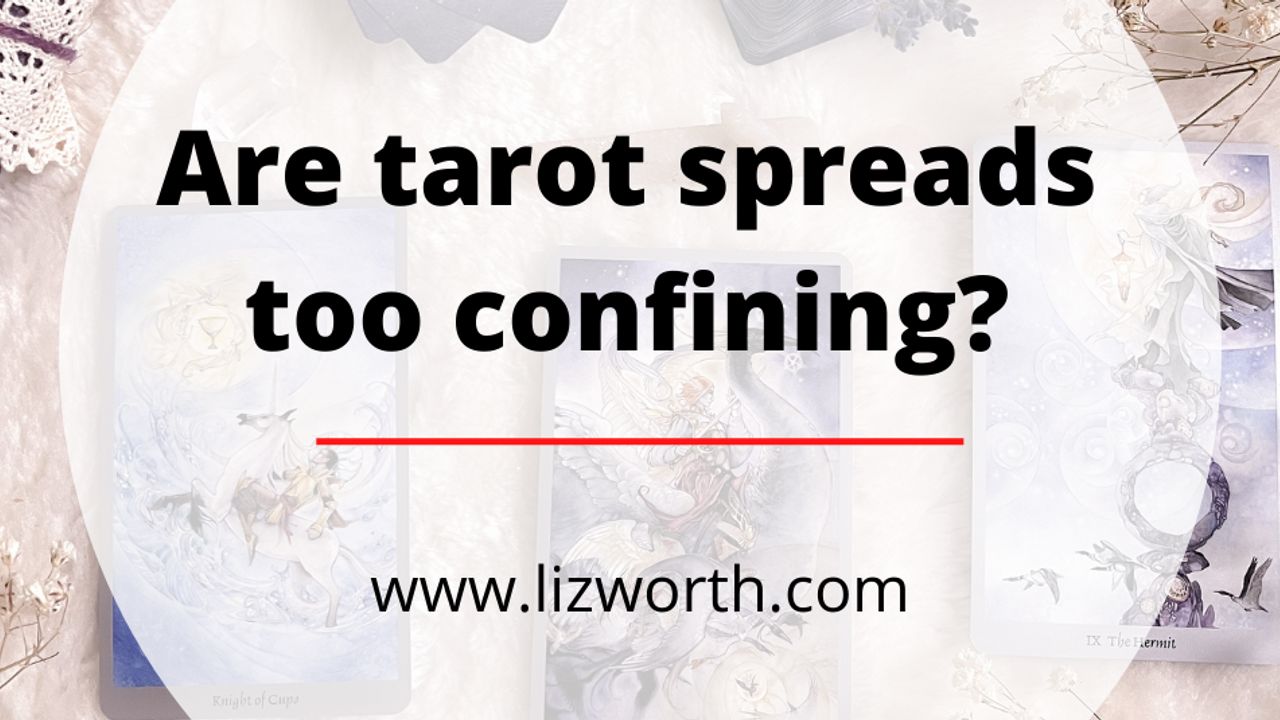Are tarot spreads too confining?

When I read tarot for my clients, I rarely use tarot spreads anymore.
Moving away from tarot spreads has been one of the biggest transformations in my tarot practice since I started reading full-time.
When I first started out as a professional reader, I used to put so much time and energy into my tarot spreads: I would create custom spreads for each client, based on questions and topics they sent me in advance.
I thought they were absolutely amazing.
But once those spreads were put to use, I soon realized they weren’t always as helpful as I thought they would be.
Why? Because tarot readings are conversations, and like any other dialogue, they flow in new and unexpected directions.
Which meant that once my readings started, sometimes my querents would say, “I think I have some different questions I need to explore instead.”
Inevitably, many of my big, beautiful, customized tarot spreads would go out the window in order to accommodate a more organic tarot experience.
Maybe this has happened to you, too. You’re sitting there trying to puzzle through a Celtic Cross, or a past-present-future spread when your querent says, “Can I ask you another question?” And you realize the question they want to ask isn’t going to work with the spread you’ve laid out.
Not that tarot spreads don’t have a time and place: They are great go-to options when querents don’t have any questions at all, or are looking for a very general reading. And they also be wonderful for exploring specific themes.
In those instances, spreads are great: Their positions impose questions and context around the cards.
But there can be times when spreads feel too confining as well.
Like when there are a lot of questions to answer, and you’re not sure if one tarot spread will cover them all.
Or when you just want to start somewhere and let the reading organic flow from there.
Or when you need to look at several different angles on something, and singular card positions don’t seem to give enough detail or nuance to go deep.
Sometimes you might want to spend more time focusing on how to the cards all speak to each other, rather than feel that you’re reading them one by one, position by position.
If you’re ready to learn how to give more fluid, organic tarot readings that can answer a range of questions – and that free you from the limitations of tarot spreads – I’d love to see you in Tarot Foundations.
We’ll go back to the basics first, teaching you how to read the details of every card in the deck so that you can start to see how each aspect of the cards plays off one another.
From there, you’ll build up your own way of seeing what the cards are showing you, so that tarot becomes a visual language that you can use with or without tarot spreads.
If you ever wish you just lay down a few cards and see what they’re telling you, Tarot Foundations will help you pave the way.
Registration is open now, and includes 12 weeks of Q&A for additional support, practice, and development. Our first class call is Tuesday, September 27.
Here are the full details if you’re interested.
Liz
